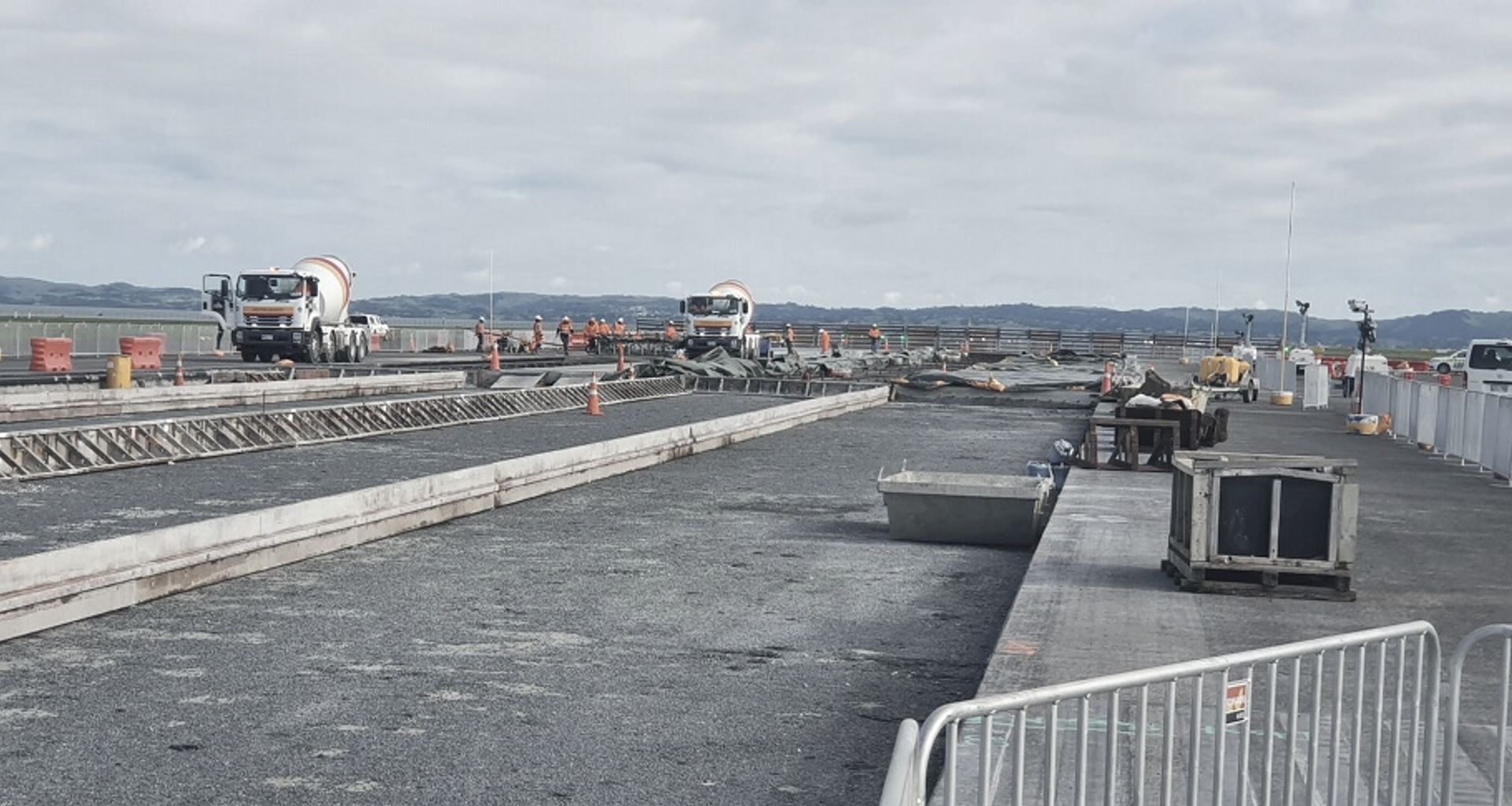Runway maintenance at Auckland International Airport

Having had responsibility for the maintenance and development of the airport’s runways over the past 20 years, Brian Perry Civil has had a fairly consistent presence at the site. “Our relationship with Auckland Airport goes back many, many years,” says Alex Taefu, Project Manager for Brian Perry Civil (BPC) in Auckland. “And in all that time and the thousands of metres of concrete that have been laid, Firth, our sister company, has been by our side.”

A 10-week, $26 million project to replace 1.1 kilometres of pavement in the main touchdown zone of Auckland Airport’s 3.6km runway began in May and the final concrete slab was poured in the first week of July.
Work began by shortening the airport’s runway by about a third allowing for the replacement of 280 giant slabs of concrete - around 36m2 each - a total of approximately 10,000m2. Aircraft continued to land and take off throughout the construction project, using what’s called a ‘displaced threshold’.
Most traffic in and out of the airport since New Zealand closed its borders has been short-haul flights and cargo aircraft, which are much lighter and require less runway length than a fully loaded, long-haul passenger aircraft. Auckland Airport worked with airlines, pilots, government agencies and aviation partners to develop a plan to deliver safe, consistent airfield operations during the maintenance programme.
“We were asked by BPC to do some samples and testing during the Level 3 lockdown period which meant we were able to start with the first of the 10, 450m3 pours at the end of May,” says Anthony Sheddan, Northern Masonry Manager for Firth. “Each slab is 500mm thick which takes some time to cure. To assist with the curing process Alex Taesu, Project Manager for BPC and his team have been using thermal blankets to offset the effects of the cold weather. This has meant we have had to wait a minimum of 72 hours in between pours.”

Thermal blankets are used to maintain a constant temperature through the concrete and make sure the outer face isn’t exposed to the cold air. Too much of a difference in temperature could result in the outer layer of concrete cooling quicker than the interior of the slab.
In total Firth supplied 5400m3 or around 12,000 tonnes – the weight of 21 fully loaded A380 aircraft – of concrete out of their relatively new plant based at the airport which opened in late 2018. “The plant can produce 100m3 an hour so was easily able to supply these pours on its own,” adds Anthony.
With the concrete pours now finished, the maintenance job is nearing completion and the site is being prepared for a return to a full-length runway in August.
Principal: Auckland International Airport
Contractor: Brian Perry Civil (BPC)
Location: Auckland International Airport
Product: Certified Concrete®
